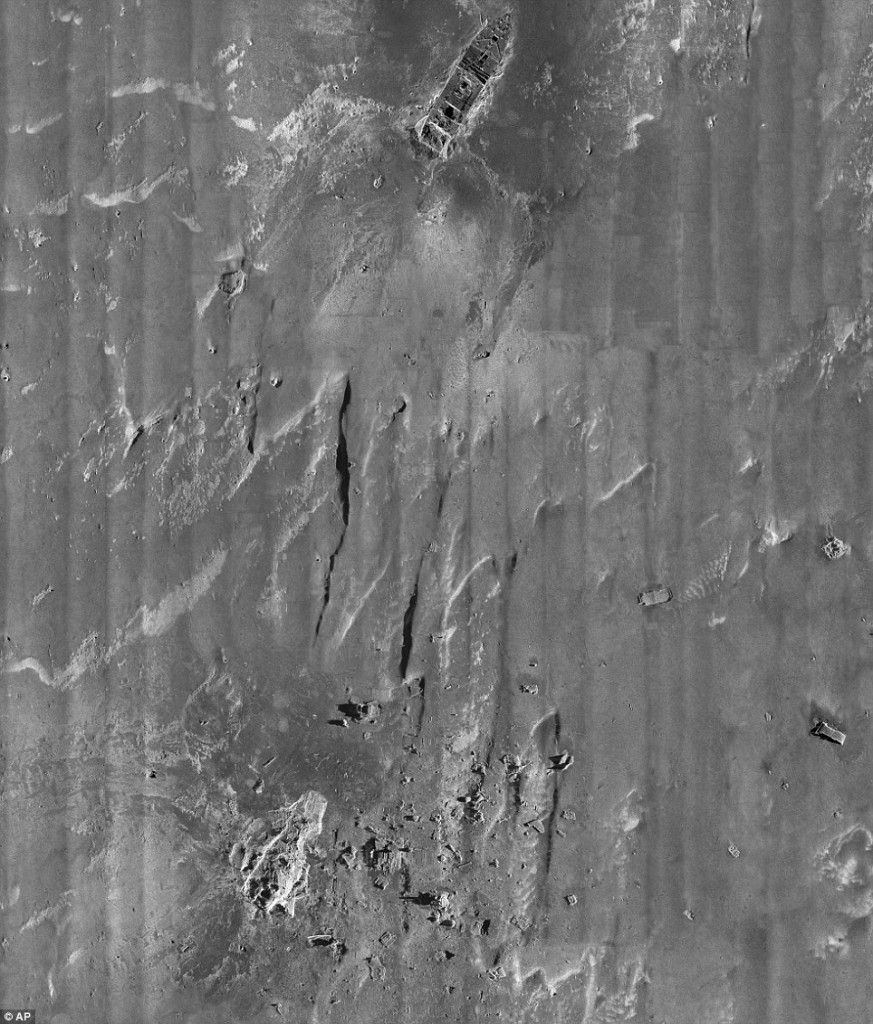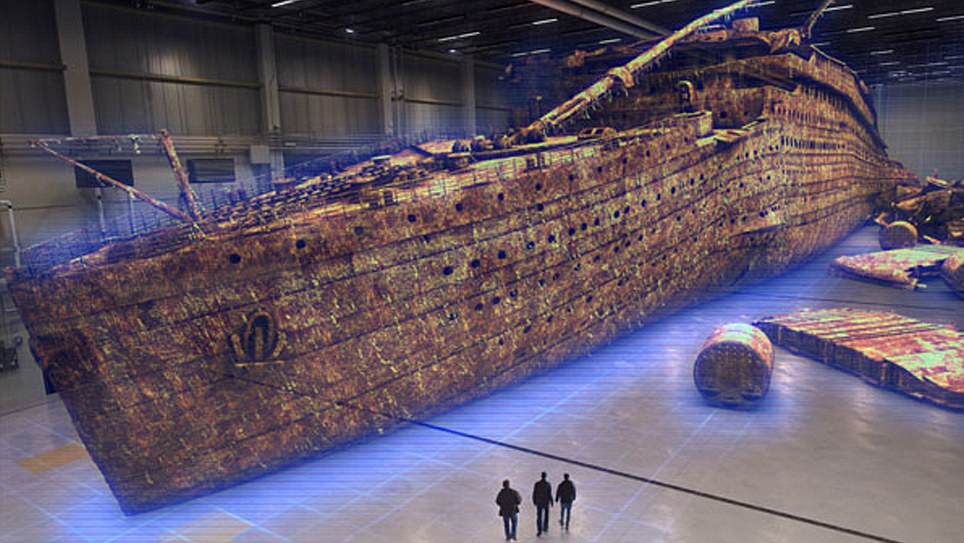In the summer of 2010, experts from RMS Titanic Inc., the company that has legal custody of the wreck of the Titanic, and the Woods Hole Oceanographic Institution returned to the famous wreck site off the coast of Newfoundland armed with the latest and greatest submarine imaging technology. The aim of the expedition was to map the entire 15 square mile debris field using high definition 3D and 2D photography and high resolution sonar.
The wreck site had been surveyed before, but none of the previous efforts combined covered more than 60% of the total area. Mappers were constrained by the limitations of manned submersibles (people can’t stay down there for long) and photo sleds (they can’t go very far afield). This time around, however, the Waitt Institute for Discovery provided cutting-edge robot surveyors called autonomous underwater vehicles (AUVs) to capture the entire field with high-resolution side-scan sonar.
Once the sonar map was done, researchers used it to determine which areas have the greatest debris concentration or pieces of particular interest. They then dispatched remote operated vehicles equipped with high definition cameras to photograph those areas.
It took them almost two years to piece together the full picture of the wreck site from over 130,000 individual images, but the deed is done.

That’s the bow of the ship in the top center (detail here). The stern is on the bottom of the picture slightly to the left (detail here). When the ship sank, the stern snapped off and dropped to the ocean floor 2.3 miles below, so that spot is ground zero of the sinking of the Titanic. The stern debris includes the ship’s galley, upper decks, boilers, luggage cranes and cylinders. The bow came to its final resting place 1,970 feet away from the stern and facing in the opposite direction.
The square halfway down the map on the far right edge of the picture has been dubbed the deckhouse debris. It was one of the parts of the wreck that had never been seen before, and it turns out to be an important clue to understanding how the ship broke apart. It contains the ship’s third funnel and surrounding pieces of the deck. Its location, off-set from the bulk of the wreck, underscores the violence with which Titanic tore itself apart.
The History Channel, in a shocking break from their laser-like focus on ice road trucking, will be airing a special about the new discoveries on the hundredth anniversary of the sinking of the Titanic. Titanic at 100: Mystery Solved debuts on April 15 at 8:00 PM EDT. It will include footage from the survey, computer simulations of the sinking based on the survey data, and my personal favorite, a “virtual hangar” in which they’ll reconstruct the ocean floor wreckage and reassemble the ship.
